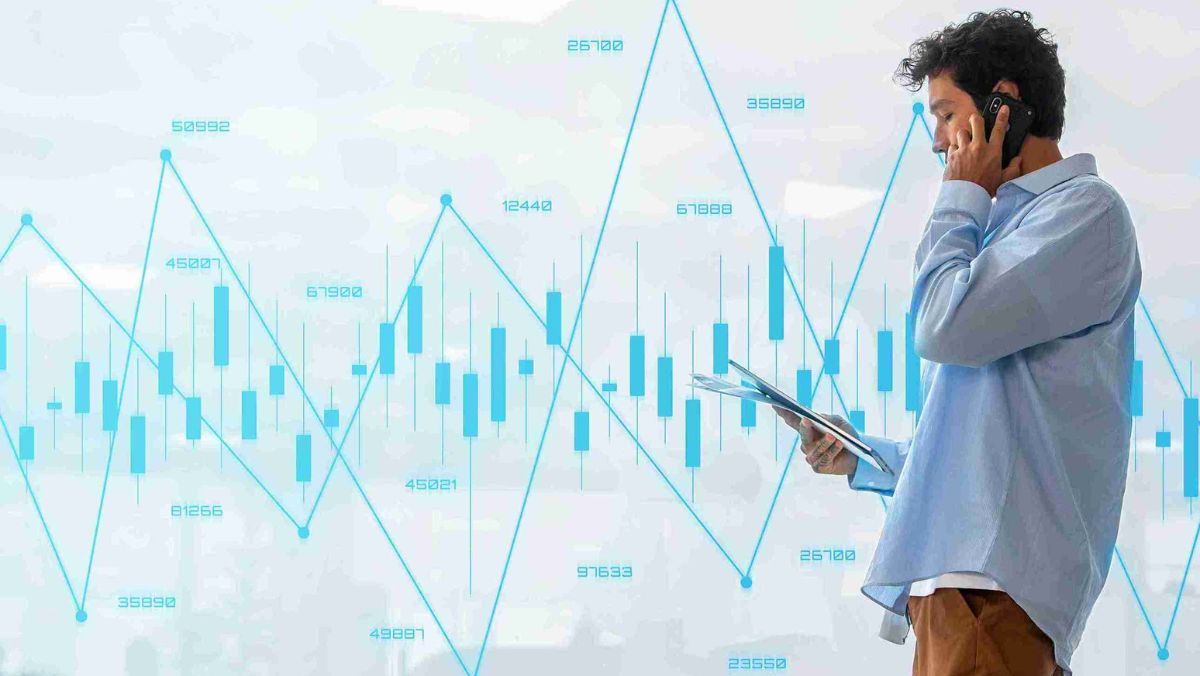Friday Feb 9 2024 03:34

11 min

Trading futures contracts can be an exciting way to participate in the financial markets, but it also comes with substantial risk. As leveraged investments are tied to the price movement of commodities, currencies, interest rates, and stock indexes, futures enable traders to realize gains quickly and experience losses if a trade goes the wrong way.
Any futures trader hoping to survive in the long run must manage risk appropriately. This article will explore the top six strategies for managing risk effectively.
One of the most basic yet effective risk management tools involves setting stop-loss orders for futures trading. A stop-loss order triggers a market order to close your position if the contract price moves against you to a specified level.
For example, if you go long on a contract of crude oil at $50 per barrel, you may place a stop loss at $48 to exit your position if the price drops to that level. This prevents you from incurring additional losses as crude oil continues falling below your entry point.
Where you set your stop loss depends on your risk tolerance and trading objectives. Typically, tighter stops of 5-10% from your entry price help lock in profits faster but can get you stopped out more quickly on normal market fluctuations.
Wider stops of 15-20% give the trade more room to work but allow more significant losses before exiting.
In addition to normal stop losses, some other helpful stop-order tactics for futures trading include:
Regardless of what type of stop system you use, having a defined exit plan for shortening losses is one of the best ways to minimize downside risk with futures trading.

The amount of capital you risk on each trade, known as position sizing, directly impacts how much risk you take on. Good position sizing aligns the size of your positions with your broader risk capacity.
A standard guideline is to risk no more than 1-2% of your account on any futures trade. If you have a $50,000 trading account, you wouldn’t risk more than $500-$1000 on one contract. This ensures no single trade can dissolve your account.
Those with larger accounts can use wider stops and thus take on more risk per contract. Beginners should stick to smaller position sizes as they refine their trading strategies.
If your first few trades lose money, don’t try to win it back with bigger positions immediately - this reckless overtrading often leads to ruin.
Position sizing works hand in hand with stop losses to prevent heavy losses. Even multiple losing trades in a row won’t sink you if your positions are sized appropriately within your risk tolerance.
Consider giving this a look: 7 Risk Management Strategies for CFD Shares
While it may be tempting to pick one or two futures contracts and solely trade those, diversification across multiple markets can balance your trading portfolio.
For instance, energies like crude oil and natural gas, metals like gold and copper, grains like soybeans and corn, and financial instruments like Treasury bonds and stock index futures often exhibit very different prices. What’s rising may be falling somewhere else.
Even if commodity futures trading plunge, shorting stock index futures may rise in value. Staying active across different futures products gives you more opportunities while lessening overall portfolio risk.
The high leverage in futures trading accounts allows for controlling large contract values with a smaller margin. But this very leverage also magnifies losses when trades go the wrong way.
A prudent leverage limit to stick to is 5X or less. Your total account margin requirement shouldn’t exceed 20% of your capital. So, if you have $50,000 cash trading capital, your total margin requirement at any one time should be capped at around $10,000.
Avoid using the maximum leverage your broker allows, which could be 10X, 20X, or higher. Just because you can trade a $100,000 position while only putting up $5,000 doesn’t mean you should. Overtrading leverage frequently leads to margin calls and blown-up accounts.
Be mindful of leverage and size your overall positions accordingly. Use leverage to maximize capital efficiency, not recklessly chase big wins.
The markets will still be there tomorrow - don’t risk total loss chasing the illusion of quick riches.
Check this article about: How to Start Crypto Leverage Trading

Attempting to trade futures with money needed for other important purposes, such as a home mortgage, college savings, or retirement, is extremely risky and ill-advised.
Only trade with 100% discretionary capital you can afford to lose, like disposable savings beyond your basic needs.
Additionally, set aside a dedicated futures trading account funded with this discretionary capital. Keep it separate from your regular household bank accounts for paying bills and daily expenses. This ensures you won’t face financial ruin even if you lose your entire trading account since basic needs are handled separately.
Knowing the trading capital is purely for speculative futures trading removes emotion and temptation to overtrade. Never add more money to the trading account than your initial stake - losses must be accepted as the cost of doing business.
View losses in the trading account as the price you pay for an education, not as total financial destruction. As long as basic needs are funded separately, trading losses are disappointing but not disastrous.
One of the biggest risks futures traders must manage is not directly related to market movements at all. Overtrading refers to the excessive frequency of trades due to a lack of patience or discipline or attempting to reach profit targets too quickly.
It often manifests as revenge trading after taking losses, aggressively widening stop levels, overleveraging, and taking wildly speculative positions. Overtrading may briefly lead to quick profits but almost always ends in an account-depleting slide.
The most effective way to combat overtrading is to stick to a structured trading plan with defined position sizing and risk points and maintain composure. Realize losses are part of trading - don’t desperately chase wins, or you’ll end up with more losses.
Sometimes, the wisest move is to sit on your hands and not trade for days or weeks if the opportunity isn’t there. Patience and discipline are the antidotes to overtrading.
This article may pique your interest: Psychological Differences Between Professional and Amateur Traders
While futures trading offers potential rewards, the inherent leverage also brings substantial risk that must be actively managed. Traders should implement basic risk management strategies like stop losses, position sizing, diversification, and leverage limits.
Beyond market-based risks, traders must also manage their behaviours by trading with dedicated risk capital, avoiding overtrading, and sticking to a structured trading plan.
Although futures trading is high-risk, the rewards can be well worth it for disciplined traders who learn to manage risks appropriately.
With prudent risk management, futures markets can offer exciting opportunities to invest in commodities, currencies, interest rates, and stock indexes.
Learn and trade with markets.com: The ultimate trading community!
“When considering “CFDs” for trading and price predictions, remember that trading CFDs involves a significant risk and could result in capital loss. Past performance is not indicative of any future results. This information is provided for informative purposes only and should not be considered investment advice.”